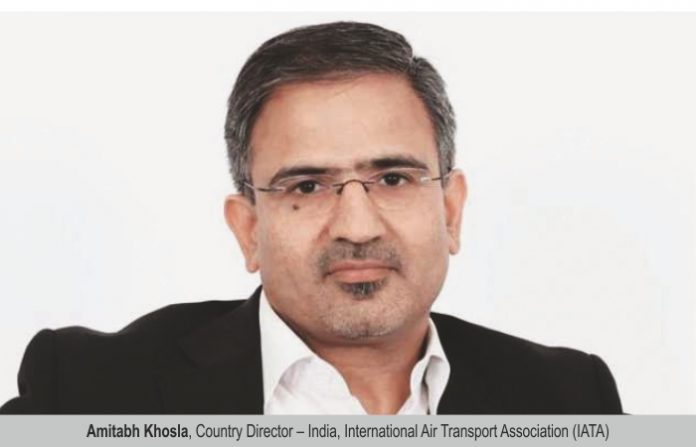Showing signs of an upward trend since the pandemic hit in April 2020, the recovery of air cargo industry in India depends on how fast airlines can grow their freighter fleets, as well as the usage of passenger-freighters. Amitabh Khosla, Country Director – India, International Air Transport Association (IATA) shares details with CARGOTALK.
Priyanshi Bana
Q How is the air cargo sector faring in India?
The total freight volumes carried by air in India had been on a strong upward trend. Freight tonnes grew by 5.7 per cent on average each year between 2013 and 2019. But there was a five per cent fall in volumes in 2019 compared to 2018, which was due to an economic slowdown in India and the impact of global trade wars that year.
In 2020, due to the impact of the pandemic, freight tonnes carried by air in India declined by 35 per cent year-on-year. The lowest point was reached in April 2020, due to the particularly strict lockdown in place in India at that time. The freight tonnes carried in April 2020 were down 62.4 per cent versus April 2019.
Since then, there has been a broad upward trend in traffic, despite a period of weakness around December 2020 and January 2021. In April 2021, freight tonnes were 12 per cent below April 2019 levels, whereas March 2021 had been 16 per cent below March 2019.
Q What has been the impact of COVID’s second wave on the international air cargo?
The April 2021 freight tonnes data suggests that the second wave of COVID-19 in India did not have a marked effect on air cargo. While this will need to be confirmed by the data for May, this is consistent with a trend we have seen at the global level. Air cargo volumes have generally been trending consistently higher since the initial hit from the crisis in April 2020, irrespective of the renewed outbreaks that have impacted air passenger traffic. One of the main reasons for this is that businesses and individuals have learned to remain productive during lockdowns, unlike during the first phase of the pandemic. Moreover, lockdowns and restrictions have generally been more limited. There has also been significant demand for manufactured goods by housebound consumers, which has supported a V-shaped recovery in manufacturing activity and air cargo.
Q Are global policies required to continue this growth?
Maintaining the strong recovery in air cargo will depend on several factors. The pace of the vaccination will influence whether governments would impose control measures that could restrict economic activity. On the positive side, historical patterns show that air cargo tends to perform well at the start of economic upturns, because businesses need to turn to air freight to rapidly restock inventories as sales rise.
On the policy side, air cargo growth in India will depend on investments into manufacturing, as well as the structure of supply chains. The pandemic has shown the vulnerability of global supply chains and the possibility that production will be moved to different regions, or places that are closer to the final consumer.
Q On capacity reaching pre-COVID levels are airlines investing more on the dedicated freighters?
The recovery will also depend on the return of air cargo capacity. While the lack of capacity has created high yields, which are supportive for some airlines, it causes headwinds to volumes carried. We think that international passenger traffic to/from India will return to 2019 levels in 2024 – and a similar date at the global level – so it is likely that passenger hold cargo capacity will take some time to fully recover.
In April 2021, global international dedicated freighter capacity was roughly 25 per cent above pre-crisis levels from April 2019. But passenger aircraft capacity – which includes passenger-freighters – was down close to 40 per cent in the same time interval. The timing of the recovery will depend on how fast airlines can grow their freighter fleets, as well as on the usage of passenger-freighters. Airlines have increased the utilisation of freighters or converted existing passenger aircraft to cargo aircraft, the so-called ‘preighters’. However, they are expensive to operate, and airlines may reconsider whether to use them when air cargo rates decline.













